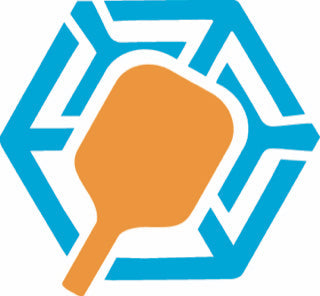The Rise of Solid Foam Core Paddles in Pickleball
The paddle industry is shifting.
As pickleball evolves, so does the equipment — and one of the most intriguing innovations gaining traction right now is the solid foam core paddle.
Unlike the traditional honeycomb-core models that have dominated the market for years, these paddles are built from a solid block of high-density foam, offering a new feel, unique performance characteristics, and fresh design possibilities.
At HEX Pro Performance, we’re watching this development closely — and investing in what’s next.
What Is a Solid Foam Core Paddle?
In short:
A solid foam core paddle eliminates the honeycomb interior and replaces it with a single-piece EVA or PE foam core — often wrapped with a carbon fiber or composite face.
This foam is similar to what's used in sports equipment like shoes, helmets, or shock pads — engineered to absorb energy, reduce vibration, and provide consistent density throughout.
How Is It Different from Honeycomb?
| Feature | Traditional Paddle | Solid Foam Core |
|---|---|---|
| Core Type | Polymer honeycomb (air pockets) | Solid high-density foam |
| Feel | Bouncy, hollow, sometimes stiff | Softer, more consistent |
| Sound | Louder “pop” | Quieter, more muted |
| Weight | Variable (lighter but unbalanced) | Slightly heavier but stable |
| Durability | Edge guard needed, some internal breakdown over time | More durable if designed well, no core collapse |
Performance Pros and Cons
✅ Benefits:
-
Even Response: No dead zones or hollow pockets
-
Softer Touch: Ideal for resets, dinks, and control-based play
-
Vibration Reduction: More arm-friendly, especially for players with tennis elbow or wrist issues
-
Design Freedom: Allows new paddle shapes and balance points
⚠️ Tradeoffs:
-
Power Limitation: May lack the raw "pop" of thermoformed carbon fiber paddles
-
Solid Feel: Solid foam cores may add mass, depending on build
-
Quickly Proven: Still newer but already used by pros
Who Are They Best For?
-
Control-Oriented Players: If you focus on placement, resets, and finesse, foam core paddles offer great feel and forgiveness.
-
Injury-Prone Players: The softer contact and vibration dampening can ease strain on joints and tendons.
-
Beginner to Intermediate Levels: The consistency and comfort help newer players feel more confident during rallies.
Are Pros Using Them?
At the top levels, honeycomb + thermoformed carbon fiber paddles still dominate, but the solid foam core segment is growing, especially in:
-
Youth and junior training paddles
-
Rec play
-
Experimental paddle lines from boutique brands
Expect innovation to continue in this space — and for more hybrid builds (foam + polymer) to emerge as brands test new shapes and balances.
HEX Pro’s Take
At HEX, we’re focused on building performance-driven paddles for players who want the best. While our current lineup uses foam edge-filled honeycomb cores (like the X3 FOAMCOR), we’re actively exploring solid foam technology for future releases.
We’re not interested in fads — we care about results. When a foam core paddle meets our standard for power, control, and feel, it will earn its place in the HEX lineup.
Final Thoughts
Solid foam core paddles are not a gimmick — but they’re not for everyone. They offer a softer, more consistent feel, but may sacrifice a bit of pop or power compared to thermoformed PP builds.
Still, for many players, that tradeoff is worth it.
The future of paddle design is about finding the right tool for your style — and foam core paddles are opening a whole new lane of possibilities.
👉 Want to stay ahead of the curve?
Sign up for HEX Pro updates and be the first to know when we launch our next-generation foam core lineup.
Ready to upgrade?
👉 Explore the HEX X3 FOAMCOR Paddle Now



Leave a comment
This site is protected by hCaptcha and the hCaptcha Privacy Policy and Terms of Service apply.